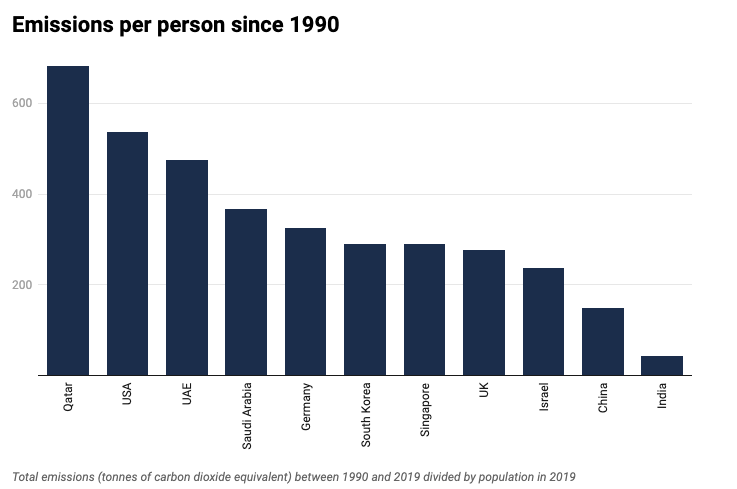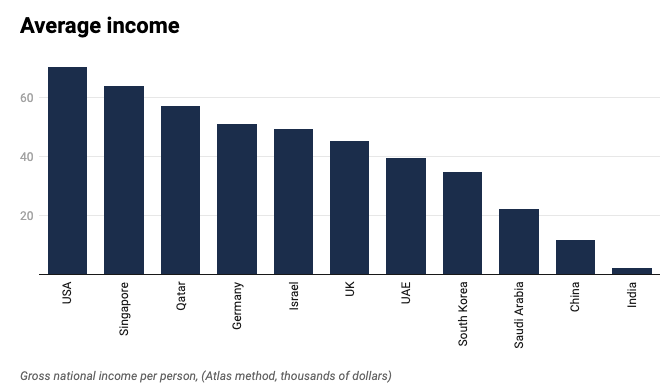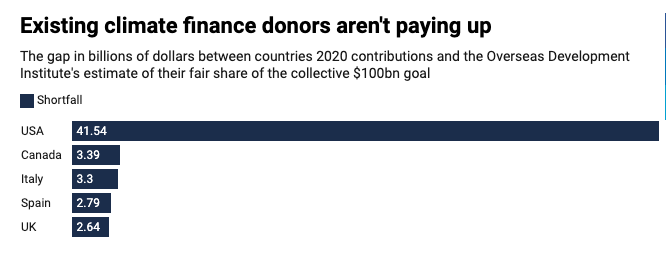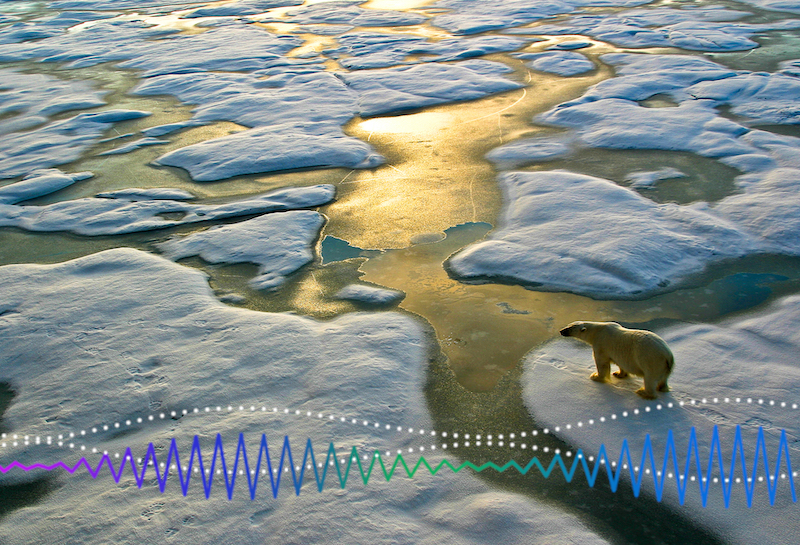At UN climate summit, rich countries agreed to set up a dedicated fund to address the loss and damage caused by climate disasters, after years of blocking.
This was a big breakthrough, but it came with a catch: they want to expand the donor pool. Who pays into the fund is still open to debate.
For existing channels of climate finance – to cut emissions and adapt to climate impacts in developing countries – the obligation to contribute falls on a list of countries drawn up in 1992. That list is based on membership of the OECD at the time: Western Europe, North America, Japan, Australia and New Zealand.
The world has changed in the past three decades. Some countries have become much wealthier and more polluting.
“I think everybody should be brought into the system on the basis of where they are today,” the European Commission’s Frans Timmermans argued. “China is one of the biggest economies on the planet with a lot of financial strength. Why should they not be made co-responsible for funding loss and damage?”
There are two main counterarguments: history and population.
‘Finger-pointing’
Every lump of coal and gallon of petrol burned since the industrial revolution has stoked the threat vulnerable communities face today. Early adopters of fossil fuels bear the biggest responsibility for cumulative emissions.
And when you take China and India’s huge populations into account, personal consumption levels are still much lower than North America’s or Europe’s.
The carbon footprint of a Chinese person today is just over half that of a US resident’s and only slightly bigger than a European’s. Indians are much less polluting, on average.
Greenpeace East Asia analyst Li Shuo told Climate Home that developed countries’ “finger-pointing” at China at Cop27 “indicates to me that countries are more willing to fight each other than climate change”.
More compelling targets for expanding the donor pool would be development success stories like South Korea, Singapore and Israel, or countries that have got rich off oil and gas like Qatar, Kuwait and the UAE.
The arguments over who should pay will be hashed out by 24 people on a transitional committee of the planned loss and damage fund. After three meetings in 2023, the committee will report to Cop28 in the UAE in December.
Many of the same considerations apply to parallel negotiations on a broader climate finance target for 2025 onwards.
Who caused the climate crisis?
Modern-day taxpayers may be reluctant to accept blame for their country’s historic emissions for a couple of reasons. One is that the harm done by greenhouse gases was not always obvious. Another is that for many countries, it was not the ancestors of today’s citizens that profited from pollution, but their colonisers.
Counting emissions only from 1990 mostly solves these problems. By then, scientists were in no doubt that humans were causing climate change and most of the world had freed itself from colonial rule. There’s also a fairly comprehensive dataset for this period.
So a reasonable measure of responsibility for causing the climate crisis would be a country’s cumulative emissions since 1990 divided by its current population. That shifts the onus onto countries that have developed rapidly since 1990, but only slightly. By this metric, China and India are still nowhere near as polluting as the USA, UK or Germany.
The countries who caused the climate crisis are the ones who currently pay into climate finance – with a few exceptions.
No Arabian Gulf state is counted as developed in the UN climate process. But Qatar’s emissions per capita since 1990 are higher than the US’s or Germany’s. The emissions of the United Arab Emirates (UAE) and Saudi Arabia are similarly high. Qatar and the UAE are in the top 20 emitters per person in Carbon Brief’s analysis of emissions since 1850.
Israel, Singapore and South Korea also avoided the “developed” classification. But they are not far behind Germany in per capita emissions since 1990. There’s a decent case for them paying in to a loss and damage fund.

Who can afford to pay?
Working out who can afford to pay is easier than attributing blame – as you don’t have to deal with history. But the conclusions are the same. It’s the traditional developed countries who can afford to pay – plus a few others.
Although China’s wealth has soared over the last 30 years, the average Chinese person earns a third the amount of the average European.
There are a few countries which the UN’s climate system defines as “developing” though that are richer than some “developed” countries. Singapore and Qatar are among the richest nations in the world.
Israel, the UAE and South Korea have similar wealth to Europe. Saudi Arabia is comparable to poorer European countries like Portugal and Lithuania.

What difference would it make?
If these countries did pay, how much should they pay? The ODI think tank has previously calculated each developed country’s “fair share” of the collective $100 billion climate finance target for 2020.
At Climate Home’s request, ODI researchers ran the numbers on potential new contributors. They found that adding the richest and highest emitting countries would not make a huge difference to the overall numbers, due to the size of their economies.
Based on their income and historical emissions, Qatar, Singapore, Israel, the UAE, Kuwait and Brunei’s individual fair shares were each less than 1%. South Korea’s fair share would be larger at 4%, comparable with Canada. South Korea voluntarily provides some climate finance – $200m in 2020.
While the moral case for China paying in is weaker, it could be a gamechanger if it did. Based on its total income, its fair share of any climate finance target would be 24%, the ODI found. Based on its total historical emissions, its fair share is 36%.
In practice, climate finance flows have never been determined by a top-down assessment of what is fair.
“In the absence of a burden-sharing mechanism for the new climate finance goal, China could decide to provide climate finance without making a meaningful difference to the total resources available,” said ODI economist Laetitia Pettinotti. “This is what the US has done.”
Among the current set of donors, the US’s “fair share” is 43% of the climate finance. But, due mostly to Republican opposition in Congress, it pays a fraction of this.
Timmermans’ attention would arguably be better directed westwards. Never mind China, South Korea and Qatar: getting the USA to cough up is the biggest challenge for climate victims seeking loss and damage funds.

By Joe Lo
Click here to read the original page






